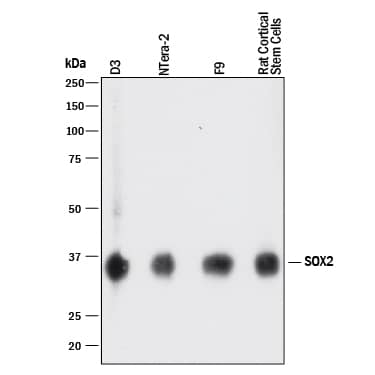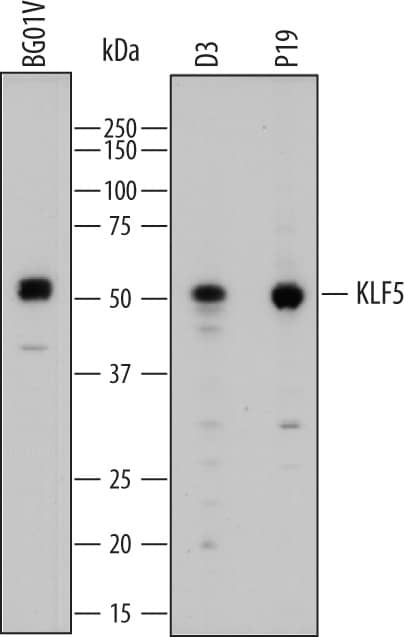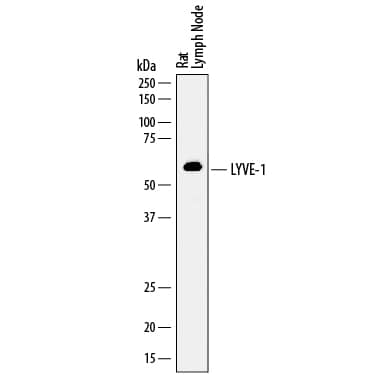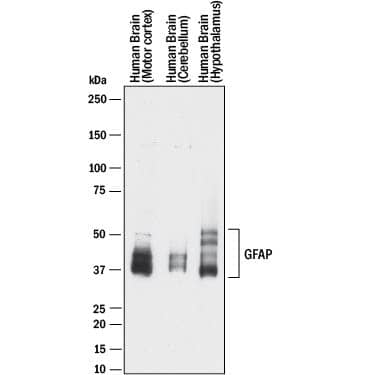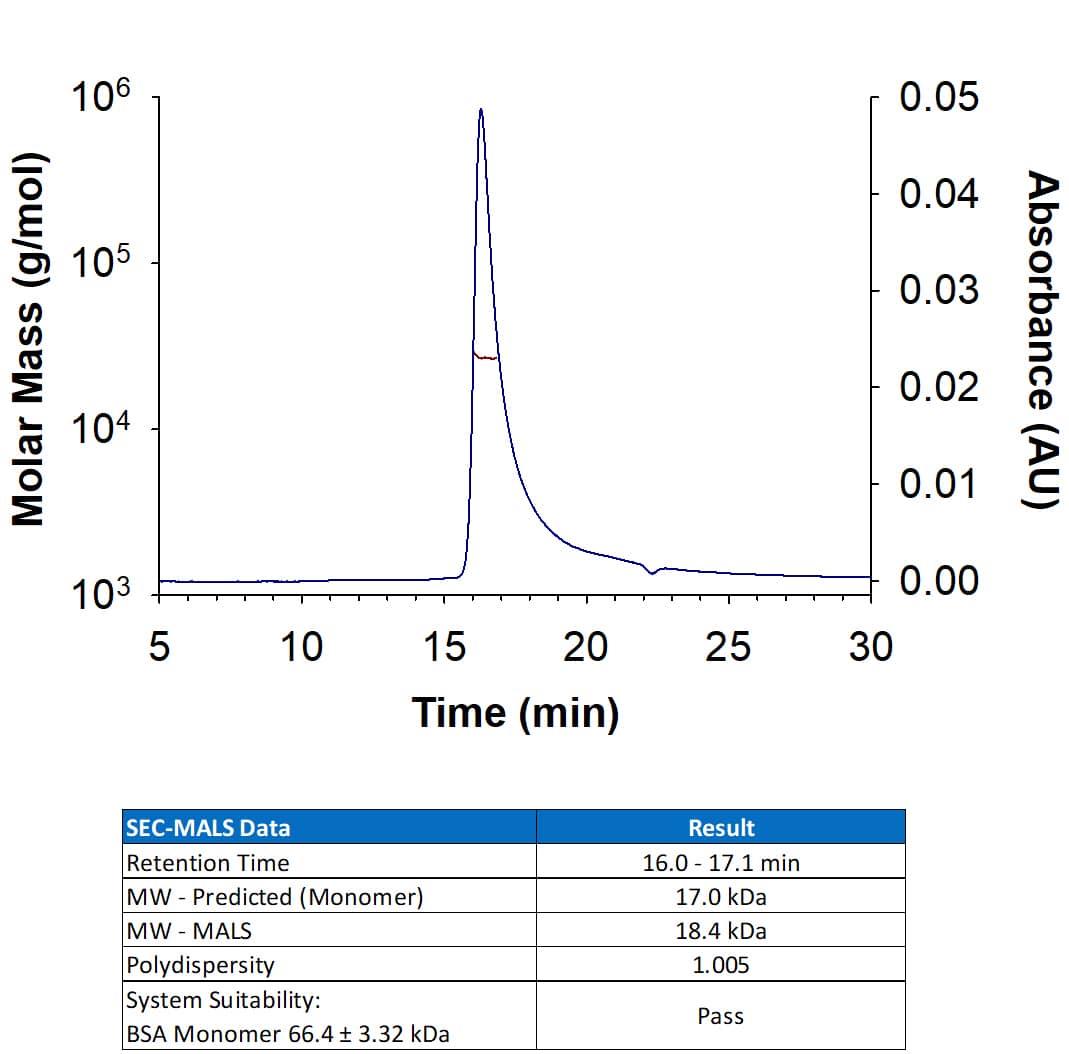Human DPPA4 Antibody Summary
Met1-Glu304
Accession # Q7L190
Customers also Viewed
Applications
Please Note: Optimal dilutions should be determined by each laboratory for each application. General Protocols are available in the Technical Information section on our website.
Scientific Data
 View Larger
View Larger
Detection of DPPA4 in NTera‑2 Human Cell Line by Flow Cytometry. NTera-2 human testicular embryonic carcinoma cell line was stained with Sheep Anti-Human DPPA4 Antigen Affinity-purified Polyclonal Antibody (Catalog # AF3674, filled histogram) or isotype control antibody (Catalog # 5-001-A, open histogram), followed by NorthernLights™ 557-conjugated Anti-Sheep IgG Secondary Antibody (Catalog # NL010). To facilitate intracellular staining, cells were fixed with paraformaldehyde and permeabilized with saponin.
 View Larger
View Larger
DPPA4 in Human iPSK3 cells. DPPA4 was detected in immersion fixed human plasmid-derived induced pluripotent stem cells (iPSK3) using Sheep Anti-Human DPPA4 Antigen Affinity-purified Polyclonal Antibody (Catalog # AF3674) at 10 µg/mL for 3 hours at room temperature. Cells were stained using the NorthernLights™ 557-conjugated Anti-Sheep IgG Secondary Antibody (red; Catalog # NL010) and counterstained with DAPI (blue). Specific staining was localized to nuclei. View our protocol for Fluorescent ICC Staining of Stem Cells on Coverslips.
 View Larger
View Larger
Detection of Mouse DPPA4 by Immunocytochemistry/Immunofluorescence Identification of USP26 as a negative regulator of pluripotency. a Schematic of experimental strategy for screening essential Usps for the generation of iPSCs. Dox-inducible OSKM-transgenic MEFs were plated, transfected with 48 individual mouse Usp shRNA lentiviral vectors to knockdown Usps, and stained for AP+ iPSC colonies after 12 days of Dox treatment. b Quantification of AP+ colonies after 12 days of OSKM induction in MEFs transduced with shRNA, targeting members of the mouse Usp family, p < 0.001 compared to control shRNA. c Quantification of AP+ colonies after 12 days of OSKM induction in MEFs transduced with mouse Usp26 shRNA, Usp20 shRNA, or control shRNA lentivirus, *p < 0.05 compared to control shRNA, **p < 0.01 compared to control shRNA. d Quantification of AP+ colonies after 12 days of OSKM induction in MEFs transduced with pLtet-O (tetracycline-inducible) mouse Usp26, Usp20, or empty vector (EV) lentivirus, **p < 0.01 compared to EV. e Images of AP staining of iPSC colonies after 12 days’ OSKM induction in MEFs transduced with control shRNA, Usp26 shRNA, EV, or pLtet-O lentivirus overexpressing Usp26. f Bright field (BF) and immunofluorescence microscopic images of Oct4, Nanog, and Dppa4 in Usp26 knockdown iPSCs. iPSC colonies were fixed, blocked, and stained with specific antibodies, followed by goat anti-mouse antibody-conjugated Texas Red. Nuclei were stained with DAPI. Scale bar, 100 µM. The data are presented as means ± SD from three independent experiments. b–d Two-way ANOVA for multiple comparisons Image collected and cropped by CiteAb from the following publication (https://pubmed.ncbi.nlm.nih.gov/28839133), licensed under a CC-BY license. Not internally tested by R&D Systems.
Preparation and Storage
- 12 months from date of receipt, -20 to -70 °C as supplied.
- 1 month, 2 to 8 °C under sterile conditions after reconstitution.
- 6 months, -20 to -70 °C under sterile conditions after reconstitution.
Background: DPPA4
DPPA4 is a nuclear SAP-domain protein whose expression is restricted to pluripotent cells, undifferentiated embryonal carcinomas and germ cell tumors. It is considered a marker for embryonic stem cells. Human DPPA4 shares 51% amino acid sequence homology with mouse DPPA4.
Product Datasheets
FAQs
No product specific FAQs exist for this product, however you may
View all Antibody FAQsIsotype Controls
Reconstitution Buffers
Secondary Antibodies
Reviews for Human DPPA4 Antibody
There are currently no reviews for this product. Be the first to review Human DPPA4 Antibody and earn rewards!
Have you used Human DPPA4 Antibody?
Submit a review and receive an Amazon gift card.
$25/€18/£15/$25CAN/¥75 Yuan/¥2500 Yen for a review with an image
$10/€7/£6/$10 CAD/¥70 Yuan/¥1110 Yen for a review without an image



